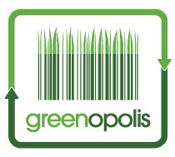Is the iPad Greener than the Book?
Reading the physical version of the NY Times for a year uses 7,300 MJ of energy and emits 700 kg of co2. Reading it on a Kindle uses 100 MJ of energy and emits 10 kg of co2.
Is the iPad Greener than the Book?
We’ve been hearing for some time now that using an e-reader like the Kindle or iPad saves paper, trees and water used for making books. It’s touted as a greener alternative to the newspapers and books we all grew up reading. But is it really? If we look at the whole system, from extraction of materials through manufacturing waste and energy to power consumption in use and ultimate disposal or reuse, is the iPad greener than the book? Let’s find out.
A recent article in the New York Times by Daniel Goleman and Gregory Norris points out the environmental impacts of both books and iPads throughout their lifecycle. And EcoLibris has links to a bunch of articles looking at this question. I have a tablet pc I’m writing this blog on, and I often read the newspaper on it. But I still curl up with the Sunday NY Times and a cup of Fair Trade coffee and read only traditional books in bed. So I’m “bi-media” I guess. Here’s some data about the merits of each.
Materials
E-reader: Uses about 33 pounds of stuff to make a 1-2 pound reader, including rare and toxic metals and lots of sand and gravel. It also takes about 79 gallons of water to manufacture.
Book: Uses 2/3 pound of minerals- mainly for roads to transport books, and 2 gallons of water to make the paper.
Manufacturing
E-reader: Uses 100 kilowatt hours of fossil fuels and wastes 66 pounds of carbon dioxide.
Book: Two kilowatt hours to form and dry the sheets, and 2/3 pound of CO2 waste.
Transportation
E-Reader: Downloaded books use only the energy to run the computer and servers.
Book:Ordering a book online and shipping it 500 miles by air, creates about as much pollution and waste as making the book itself. Driving five miles to and from a bookstore creates about 10 times the pollution and resource depletion as making the book. Your bookstore would have to be 300 miles away to create the equivalent in toxic waste of making one e-reader — but you might do that and more if you drive to the mall every time you buy a new book.
Health Impacts
Environmental health impacts of making and transporting an e-reader are estimated to be 70 times greater than a single book. But if you store more than 70 books on the e-reader, you are ahead of the game.
Product in Use
E-Reader: Lit screen is more energy efficient than reading a book by light bulb for an hour or two.
Book: If you read by natural light, the advantage goes to the book.
Disposal or Reuse:
E-reader: If it winds up being “recycled” illegally, workers in poorer lands, including children, will be exposed to a range of toxic substances as their hands disassemble the units. With state-of-the-art e-waste recycling procedures, the risk is far less for workers. Keeping the unit in service as long as possible is the best path here.
Book: In a landfill, your book generates twice the global warming and potential impact on local watersheds as manufacturing it. Donate it to the library or pass it on to another reader. Books can last 100’s of years out of the landfill and still thrill new readers.
Bottom line? Well with soy inks, recycled paper, new electronic manufacturing standards and materials recapture it’s a moving target. But according to Goleman and Norris, the fossil fuel, water and mineral consumption of one e-reader equals 40 to 50 books. CO2 waste and global warming impact equals 100 books, and impacts on human health are in between those two. If you read a lot, an e-reader can have a lower impact over all.
But then again, are we asking the wrong questions? Why own the book or e-reader in the first place? They suggest that all things considered, the greenest thing to do is walk to your local library to read or borrow a copy of your next book.
To comment on this story, visit the original blog post.
Greenopolis.com is dedicated to our users. We focus our attention on changing the world through recycling, waste-to-energy and conservation. We reward our users for their sustainable behaviors on our website, through our Greenopolis Tracking Stations and with curbside recycling programs.
GREENOP5948

